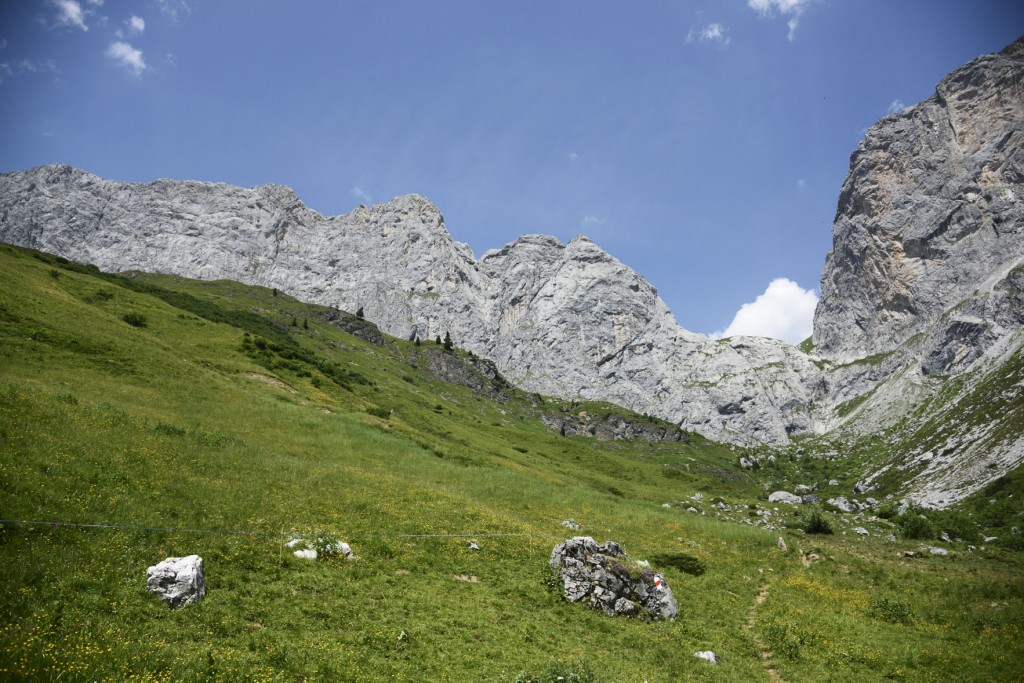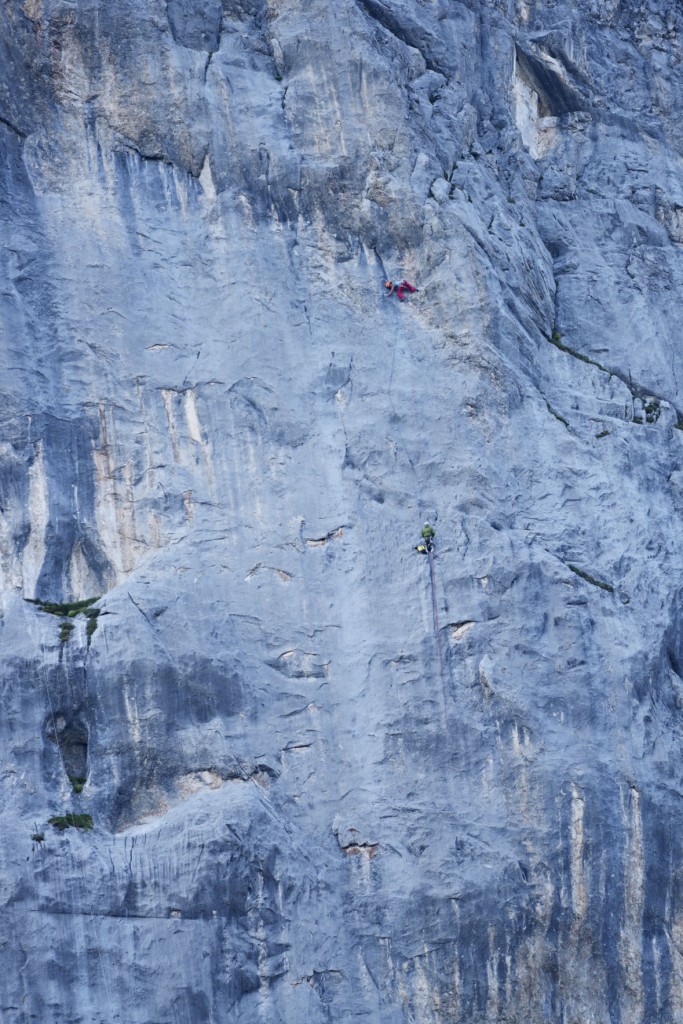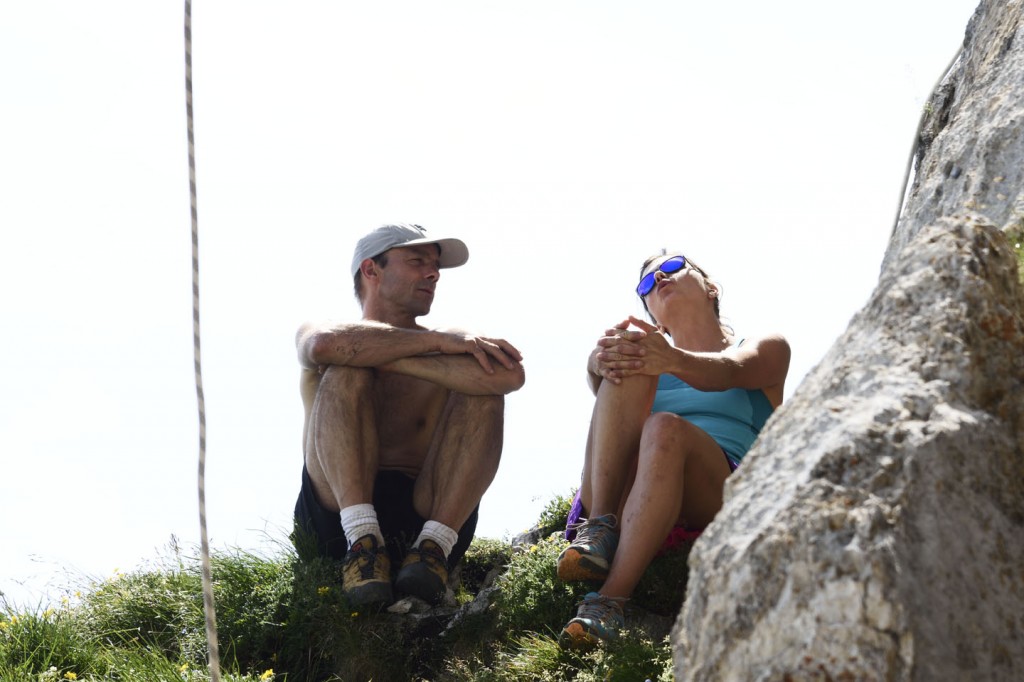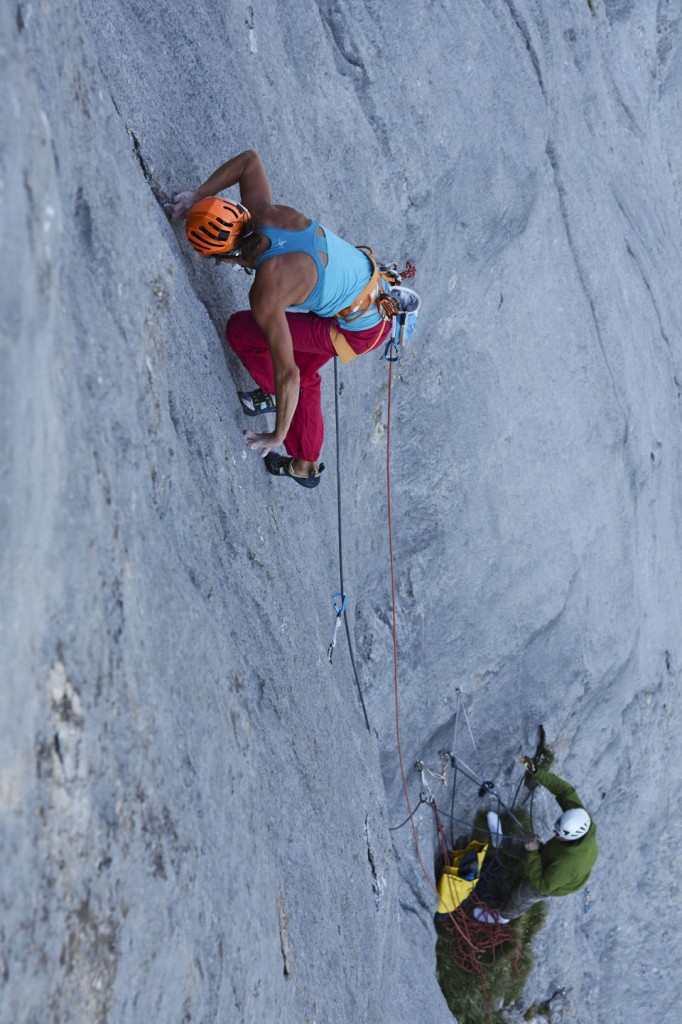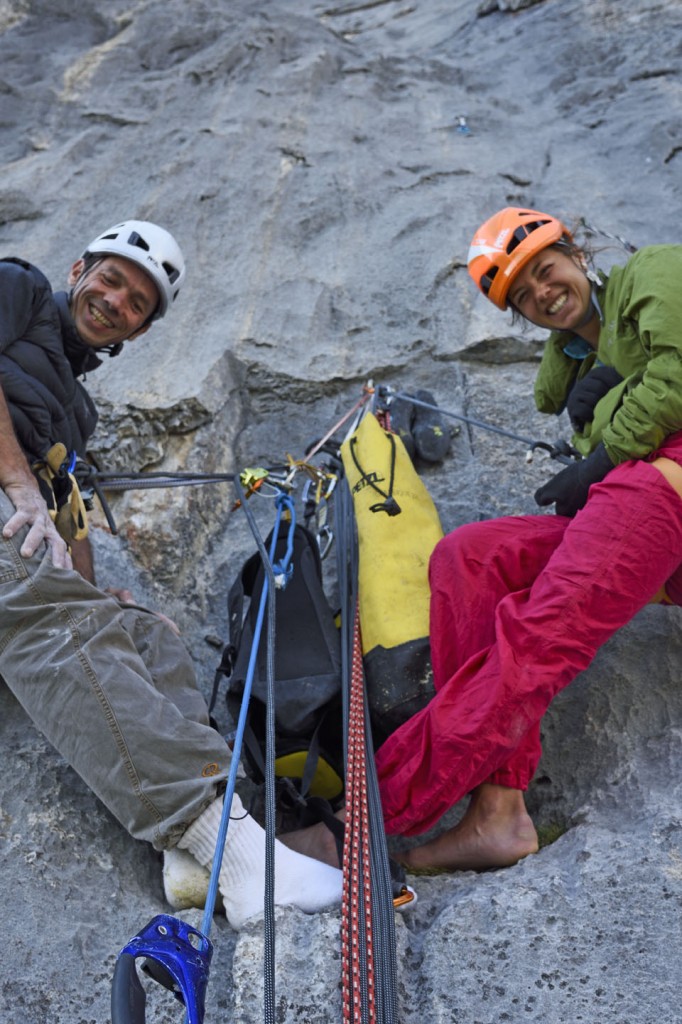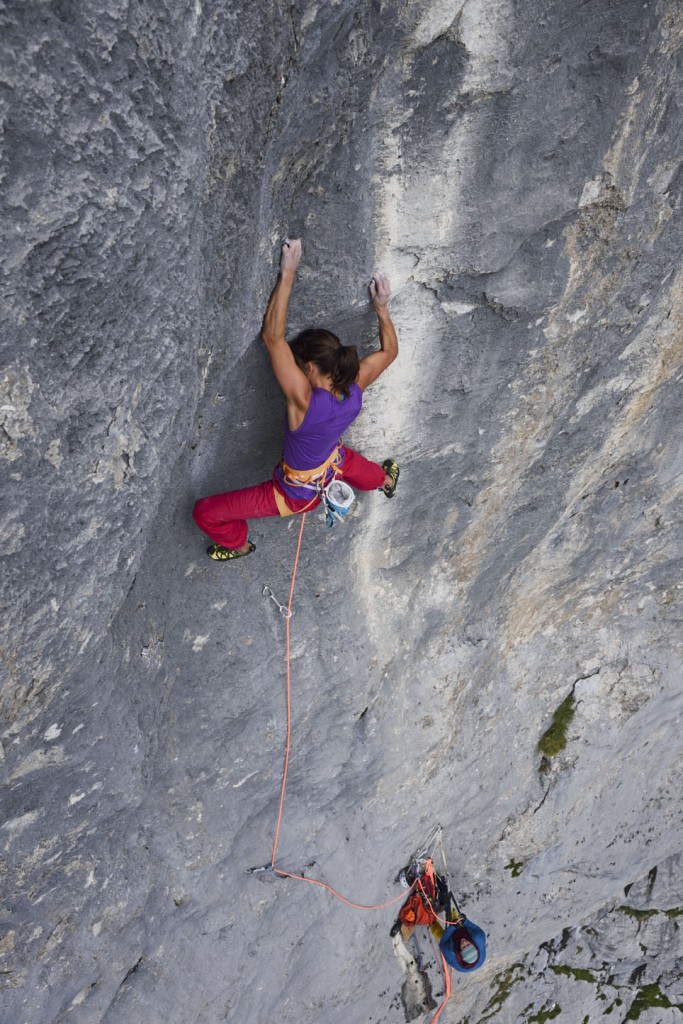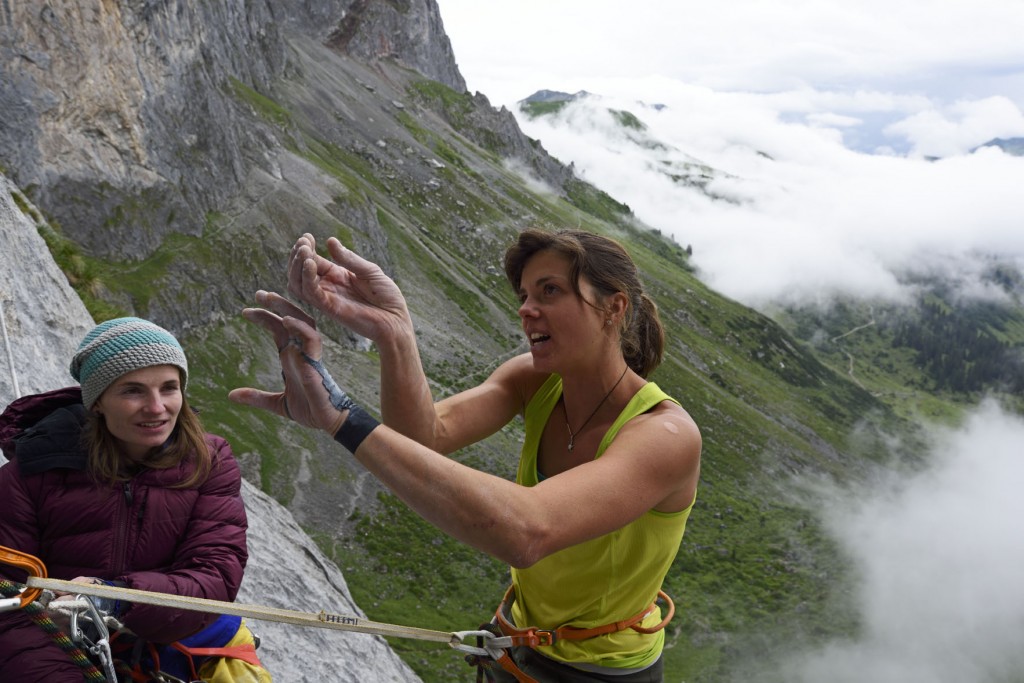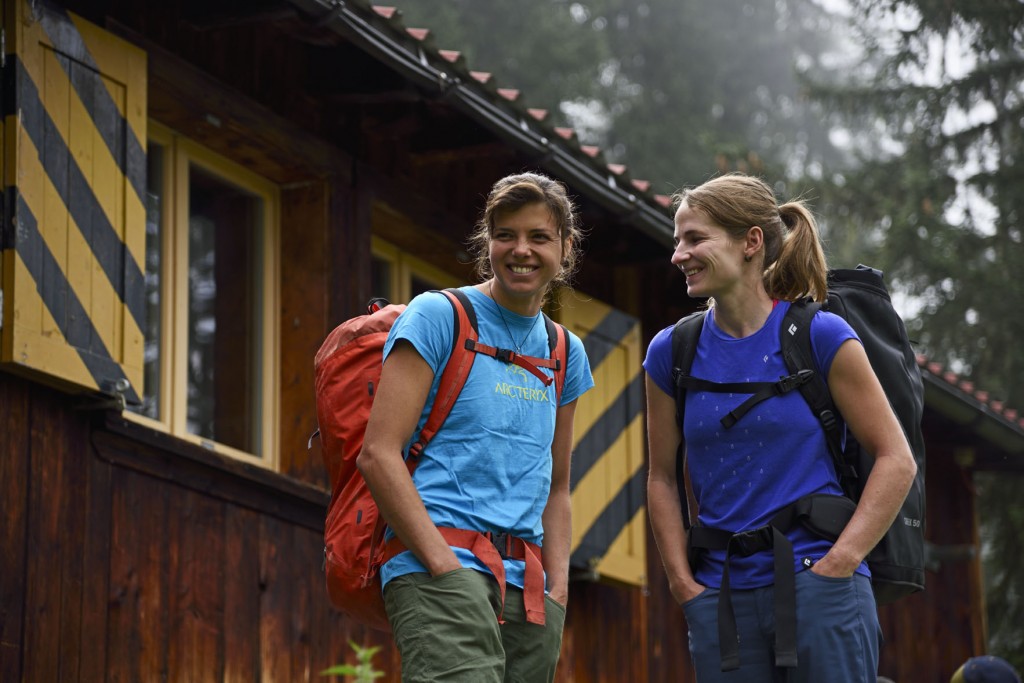Words by Piotr Drożdż
Photos by Robert Bösch
The Kirlichspitze towers of the Rätikon range have already taken away many a breath. Even though there are some higher peaks in the vicinity, the smooth limestone slabs have been the massif’s no. 1 for climbers from all around the world. As is the case with every climbing area, Swiss Rätikon has its own legends. Martin Scheel, Beat Kammerlander and Peter Schäffler influenced alpine climbing history in Rätikon and beyond. Their achievements propelled their followers and the ethics developed by Scheel set new standards that were later transferred to the other parts of the alpine multi-pitch climbing world: no reconnaissance, always ground-up, no aids and hanging only from skyhooks while placing the bolts. Those were the rules of the game that today, 30 years later, would probably make most climbers nauseous. It was this climbing philosophy that has accompanied Nina Caprez from her early years.
Silbergeier – the odd one out
“I grew up in Küblis, which is the last village next to Rätikon. I climbed a lot there, not specifically in that area but in the surrounding areas offering some easier stuff. Soon, I started doing multipitch climbs and I got used to the local ethics. Martin Scheel, Beat Kammerlander and Peter Schäffler were great heroes in my home area.”
After many years of sport climbing, Nina’s eyes turned into the direction she knew very well, the Kirlichspitze towers. The goal was more than obvious and its name was Silbergeier. The Swiss athlete started working on the route with a dear friend of hers, Barbara Zangerl. The bouldering expert and first female ever to send an 8B boulder, turned out to be not only a great help in adapting to the Rätikon climbing style but also an invaluable source of support and motivation. Unfortunately, the Austrian’s back injury made her withdraw from climbing for a long period of time and Nina was left alone on that technical and mental battlefield.
“When I did Silbergeier it was widely called the first female ascent, but that was never my goal. In my eyes there is no difference between girls and boys, especially on vertical and technical faces like the ones in Rätikon. There is only one difference that matters and it’s between the first ascent and all that follow. Redpointers are always in the privileged position, they already know that the route is possible to climb.”
Even as a youngster, Nina accepted the role of the unknown in the climbing game. With a maillon rapide on her harness, the Swiss have always been aware of the fact that climbing in Rätikon is like entering a completely new dimension where you might need to rappel down mid-route, not even seeing the final chain. Dealing with the unknown is exactly what makes climbing there so special. “Seeing people using a clip stick on Silbergeier always surprises me. I think they cannot even imagine what they’re missing by doing so. You have to really try and learn how rich and fulfilling the adventure of facing the unknown can be, where every single quickdraw is a huge success and topping out a route is a victory. Only then you realize that at the end of the day, it doesn’t matter if you send the route or not.”
The clip stick is not the only new guest that has recently paid a longer visit to Silbergeier. “Honestly, Silbergeier is easier to climb now. There are long quickdraws and tick marks everywhere. It’s a different route now, no adventure anymore. People think the run-outs on Silbergeier are scary but the truth is that compared to real Rätikon stuff, they are not. If you fall, you fall safely. The place and climb itself are great, but fortunately there are still other routes that give you a sense of real adventure: no chalk, no draws, no clue.”
Longing for the old school
In search of these feelings, Nina decided to come back on Hannibal’s Alptraum, the route she’d had in the back of her mind since her first try in 2009. It was first climbed by Martin Scheel and Robert Bösch in 1986, the year Nina was born. It remains undefined who managed to make its first single-push free ascent. Attempted many times, the route has let through few climbers and after her first experience on it, Nina didn’t expect she would become one of them. “I tried the route in 2009 with Simon Riediker and again in 2013 with Mélissa Le Nevé. Each time I was coming back home beaten up physically and psychologically. The route offers very specific, really slabby climbing. On Silbergeier you need strong finger power and endurance in your forearms. On Hannibal, crimping is useless as it is pretty much a touch-and-go style and is all about your footwork. You need the best shoes in the world and great technique on slabs.”
Who would be a better partner in a psychophysical game of balance, movement, precision and nerves other than the French climbing legends of the 80’s? Marc le Menestrel, who’s support was inspiring and it was with him on her side that Nina managed to stand on the top of the 4th Kirlichspitze after long days of frustration interwoven with success. What’s more – her success turned out to be inspiration for Marc and he also sent the route.
Challenge accepted
Never underestimate the power of will. Feeling more confident after her success on Hannibal’s Alptraum, Nina is aiming high again. She knows exactly who she should partner up with this time to create a perfect team. “Babsi and I believe in the same values in life. Right now, we are climbing at and equal level, with the same experience in multi-pitch routes and the same approach to adventure. We treat our goals not as projects, but as dreams.”
It was Babsi who first paid closer attention to Unendliche Geschichte and passed her vision to Nina. The route was put up in 1990 by Beat Kammerlander and redpointed in 1991. Pietro dal Prà did the second ascent in 2005 and that would be all. Although many have tried, the climb always appeared to be too complicated and psychologically demanding.
“Both Beat and Pietro have been a big support for us. Babsi met Beat and they were drinking coffee, studying pictures and discussing the beta for three hours. He was super psyched that we were trying his route. The same happened when I met Pietro dal Prà at the Outdoor tradeshow: ‘Nina, go for it,’ he said, ‘it’s such an amazing route’”.
Apart from being exceptional in style and beauty, the route is also obviously difficult and can hardly be compared to anything else. Bouldery difficulties, no chalk, no visible holds or footholds – pure climbing. It had been waiting for its second ascentionist for more than a decade. After another ten years would it be Nina and Barbara’s turn to reach the top?
“We had already spent 10 days on the route. During that time we were able to send every single pitch individually at least once and now we want to come back. For this climb we’re not really planning anything – media and sponsors schedules come with the flow. It is just the two of us, working and experiencing the whole thing together. The amount of effort I’ve put in to the route so far was possible only thanks to the lessons I learnt on Orbayu. I realized that the grades mean nothing in climbing. What’s most important is the experience, the rest is just the icing on the cake. I can’t lose anymore: the whole experience and adventure on the route is so big that I’m already winning”.

